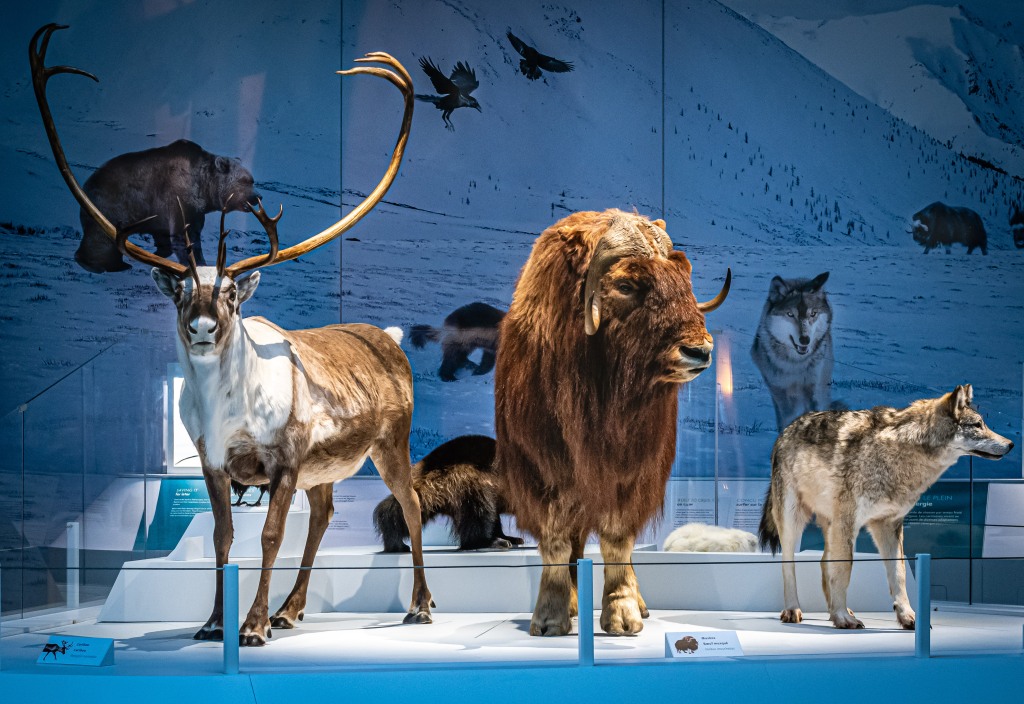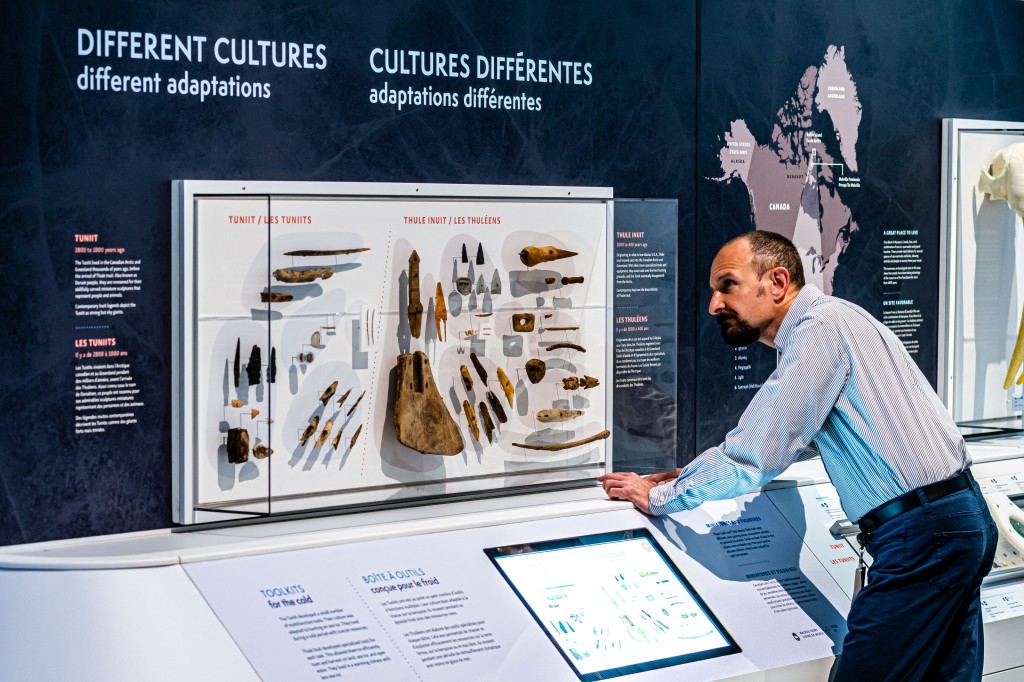This exhibit was created in partnership with Polar Knowledge Canada, Hatch and Enbridge. Museum season sponsor is the Globe and Mail. Thank you to all our sponsors.
With the COVID-19 pandemic now in its third year, contemplating its effect on society is inescapable. News outlets continue to publish analyses of the virus’s influence on health, economics, education, etc. It is not hard to see how the pandemic has impacted our institutions and individual lives, affecting the present and rippling well into the future.
Human history is punctuated with occurrences that altered the trajectories of entire societies. On a broader scale, the history of our planet and all the life it harbours has also been influenced by certain profound events that echo throughout geological time. A good example is the last ice age, which lasted from around 12,000 to 110,000 years ago, and is (along with earlier frozen periods in Earth’s history) the subject of a special exhibit recently mounted by the Canadian Museum of Nature.
At the end of 2020, we debuted Planet Ice: Mysteries of the Ice Ages. Intended to travel to various institutions across Canada and the US, lockdowns and other disruptions related to the pandemic prevented this from happening as initially planned (although it did have a run at the Ontario Science Centre), nor did it reach as many people as hoped during its time in Ottawa. That is why we are thrilled to announce that the Canadian Museum of Nature will once again host the exhibit this summer before launching its cross-continent tour.

Planet Ice focuses on how cold temperatures, snow, and ice operate as natural forces shaping our planet’s landscapes, ecosystems, and biological evolution. In a previous post, I profiled how Planet Ice explores some of the ways that humans have responded to life in the cold through displays focusing on the cultural adaptations of prehistoric inhabitants of the Arctic. Having been involved in developing this archaeological content, and experiencing the completed exhibit, I have since been attuned to noticing all the various natural history connections to snow and ice—and there are many.

A survey of new research published over the last two years reveals the surprising complexity and far-reaching influence of ice as a substance within the natural world. Did you know that frozen water is technically a mineral with different crystal forms, the nineteenth variety of which was just discovered? Or that sea ice shapes the ecology of the kelp forests off the various coasts of Canada? Recently published work also reveals that the Canadian Arctic experienced a warmer, greener interglacial phase prior to the onset of the most recent ice age, profiling what a future ice-free High Arctic may look like as global warming continues.

At the other end of the globe, we are realizing that extensive ice shelves surrounding Antarctica shelter a unique and little-known animal community adapted to the dark, cold conditions of the water beneath. Antarctica may also be home to the world’s oldest ice, which at 1.5 million years of age, may shed light on the climatic factors driving the cycle of glaciations over the past one million years.
As the curator of the museum’s Palaeobiology Section—and a gardener—the item that captured my attention the most, however, is research documenting a connection between glaciers and earthworms. As I suspect is the case for most people, when I think of the last ice age, my mind conjures up images of hairy mammoths, giant cave bears, woolly rhinos, perhaps even wolverines and ground squirrels… but never earthworms! It turns out that there is a good reason for this.

The earthworms currently in Canada have largely been introduced to northern soils over the past few centuries due to human activity. Prior to this, Canada was essentially free of the critters as the most recent ice age wiped them out. Earthworms could not survive the conditions that developed beneath the thick covering of glacial ice that extended across most of what is now Canada.

In addition to being an interesting evolutionary quirk, the ice-driven absence of earthworms has more serious ramifications in the modern world. Post-glacial insect communities in Canada did not develop in the presence of earthworms, whose behaviours alter the structure and composition of leaf litter and soils on the forest floor. These changes to the ground, as well as competition from earthworms for food, have depressed both insect biomass and biodiversity. In forests with invasive earthworms, insects occur in smaller numbers and represent fewer species.
So, earthworms may be good for the garden in northern climes, but perhaps not so much for forests and other ecosystems. Who would have thought that underlying the pattern of earthworm distribution in North America and a modern problem such as insect loss would be Ice Age glaciation? Such is the power of cold and ice to influence the natural history of our planet.
I invite you to explore Planet Ice: Mysteries of the Ice Ages—either here in Ottawa or elsewhere as the exhibit travels—to learn more about the varied and fascinating ways that snow and ice have constrained the direction of geological and biological change over billions of years of evolutionary history. COVID-19 may have disrupted Planet Ice for a time, but the show must go on!
